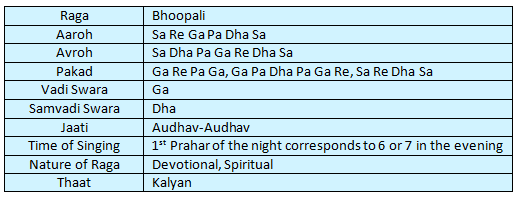
After explaining the classification of ragas in different time periods we’ll go deeper into Hindustani music in this article and I’ll be explaining the concept of “Shrutis”. I would like to give a short and quick recap before we move ahead. There are basically 7 swaras in our Hindustani music categorised as Achal and Vikrit Swara. Vikrit swaras are further classified as komal and tivra. The pitch of a komal swaras is slightly lower than the pitch of the original swara (known as the flat note in western music) and the pitch of a tivra swara is slightly higher than the original swara (known as the sharp note in western music). You can refer to my previous article for a quick recap (Link Hindustani Music- 2).
Shruti is the slightest difference in the pitches of two sounds which the human ear can detect. This is the most simple and correct definition of a Shruti. There are a total of 22 shrutis as identified by the great scholars of our music. The interval between these 22 shrutis is so short that a normal human ear cannot detect it. It requires a great skill and years of practice to distinguish between two shrutis. However, 7 swaras (we’ll account only 7swaras for easy understanding) are so appropriately placed on different shruti places that a normal human ear can detect it without putting in any extra effort. This placing of swaras can be explained with the help of the figure drawn below-

This figure clearly shows that, the 7 swaras are placed at unequal intervals on the 22 shrutis. These 7 swaras are placed at 4th, 7th, 9th, 13th, 17th, 20th and the 22nd shruti having intervals of 4-3-2-4-4-3-2 shrutis each.
The above figure shows the placing of swaras on the shrutis as per the ancient period. In those times, the swara was placed on the last shruti of a particular interval. For e.g. the first interval of four shrutis starts from the first shruti (and ends at the fourth shruti) and the swara “Sa” is placed on the fourth shruti exactly where the interval ends, similarly the second interval of three shrutis starts from the fifth shruti (and ends at the seventh shruti) and the swara “Re” is placed on the seventh shruti exactly where the interval ends and so on. This placement of swara on the last shruti of the interval was done in the ancient period.
This figure shows the placement of swaras on the shrutis as per the modern period. In the modern period, swaras were placed on the first shruti of each interval. For e.g. the first interval starts from the first shruti (and ends at the 4th shruti ) and the first swara is a placed on the first shruti of the interval, similarly the second swara “Re” is placed on the beginning of the second interval i.e. on the 5th shruti and so on. Thus the placement of swaras as per the ancient period is quite different from the placement of swaras as per the modern period system.
However, the shruti intervals between the swaras are same in the both the periods, only the placement of swaras has changed. Similar to swaras, these 22 shrutis are also named, but we’ll discuss it later and not in this article.
Now I’ll explain Raga Bhoopali in this segment of the article-
Follow the link below to listen to this raga as rendered by the great masters of music-
- Raga Bhoopali by Pt. Kumar Gandharva (Vocal)
 https://www.youtube.com/watch?v=qtAcNVRnPHc
https://www.youtube.com/watch?v=qtAcNVRnPHc - Raga Bhoopali By Pt. Hari Prasad Chaurasia (Flute)

- Raga Bhoopali by Ustad Shahid Parvez (Sitar)
 https://www.youtube.com/watch?v=aONrsGkVAXU
https://www.youtube.com/watch?v=aONrsGkVAXU - Raga Bhoopali by Ustad Amjad Ali Khan (Sarod)

This article was based on the 22 shrutis of our music. We will talk about shrutis in detail in the coming articles.
Let me know if you want me to write on any specific topic in Hindustani Music. Do share this with your friends and comment in the box below.
Thank you
Shubham Mittal :-)





































